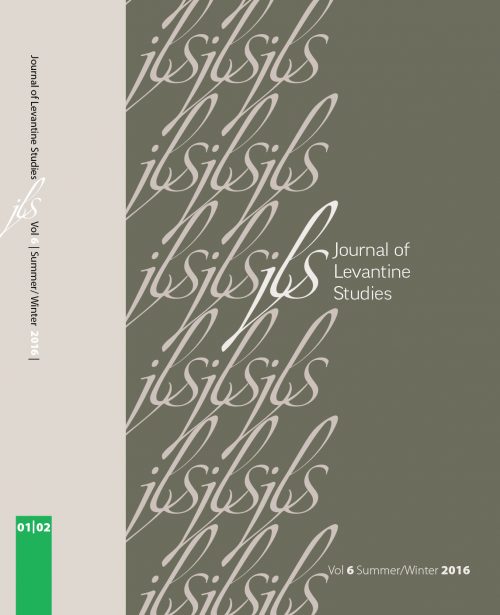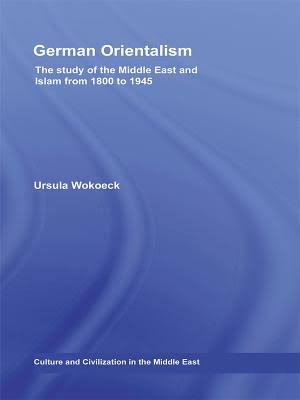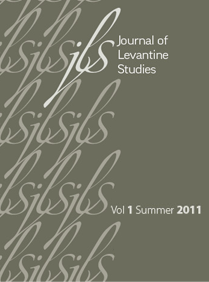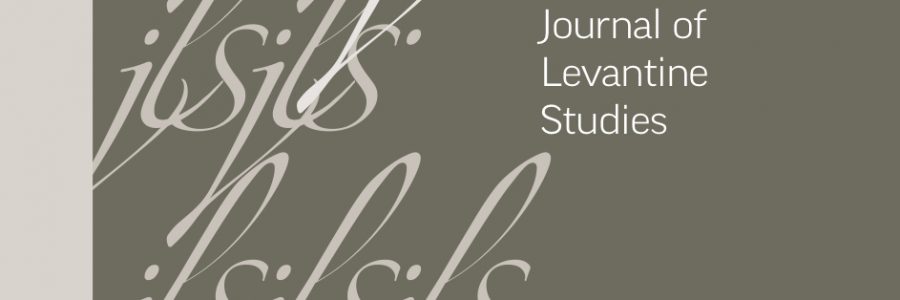-
Add to cartQuick view
Sune Haugbolle, War and Memory in Lebanon. Cambridge: Cambridge University Press, 2010. 260 pp.
Sune Haugbolle, War and Memory in Lebanon. Cambridge: Cambridge University Press, 2010. 260 pp.
$5.00Free!Add to cartQuick view -
Add to cartQuick view
The Jewish Precedent in the Spanish Politics of Conversion of Muslims and Moriscos
Free!The figure and the problem of the converso are often addressed in Abravanel’s works, especially after the 1492 expulsion, as has already been noted and studied by earlier scholars. Yet the link between Abravanel’s theological-political conceptions and his disseminated remarks on converts has not been studied as such. In this article I will try to partially fill this lacuna by studying a few of Abravanel’s important texts on the converts and by highlighting their theological and political background and meaning. Modern historiography has attempted to separate the political dimension of the converso phenomenon apparent in Abravanel’s biblical and messianic commentaries from the theological hermeneutical framework in which it is expressed. The following study focuses on Abravanel’s apologetic use and explanation of the conversos’ fate as it comes to the fore in several passages of his messianic work Mashmia yeshua (Announcer of salvation) of 1498 and of his commentary on Ezekiel of 1504. Abravanel’s messianic apology of Judaism after 1492 developed a certain theological and political meaning of the conversos’s destiny, which pointed at the converso not as a political figure revealing the historicity of the religious community but as a necessary by-product of exile participating in the messianic history of Israel and even revealing the stage it had reached.
Add to cartQuick view -
Add to cartQuick view
The Palestinian Historiography of Family Leadership during the British Mandate
Free!This article seeks to expand the study of Palestinian Arab women’s self-identification and social and political activism by examining how Arab Christian women viewed, shaped, and managed their participation in the project of defining Palestinian national identity during the period of British colonial occupation. During the Mandate period, elite Christian women made particular use of mission schools and Christian women’s charitable organizations as platforms for promoting a vision of Palestinian nationalism as modern, nonsectarian, and politically progressive, in hopes of creating a Palestinian national identity in which they could claim a central role. As the Mandate wore on, though, it became increasingly evident that the presentation of Christian women as central to the expression of a broadly based, nonsectarian, modernizing, Westernizing Palestinian national identity was belied somewhat by the communal and class consciousness that education in elite Christian schools and membership in charitable organizations engendered. The way in which this purportedly middle-class, nonsectarian nationalist vision was developed and articulated in highly class- and communally conscious venues ultimately limited its purview and linked it with oppressive colonial practices in the eyes of much of the Palestinian Arab population.
Add to cartQuick view -
Add to cartQuick view
Unrest at the Gates of Aleppo: British Perspectives on the Bedouin Challenge to Public Security in Northern Syria, 1848-1913
Free!The political situation in the eastern Arab world during the colonial period was subject not only to the interests of the great powers of East and West but also to disturbances caused by tribal Arabs who found refuge in the desert. Although there has been much research on bedouin of both the nomadic and the sedentary tribes of Syria and its hinterland—mostly drawing on ethnographic aspects—little has been written on the tribes as a challenge to political stability. Aleppo is of special interest since it was an important city close to the desert frontier and was under permanent threat of bedouin raids. The city also was and still is a place of sectarian diversity, second only to Beirut, and all too often the Christian population was wedged between the Ottoman government and nomadic tribes. Dealing with the bedouin thus touches all aspects of an eroding Ottoman power that affected Levantine urban life and sectarian coexistence. This paper draws on previously unpublished archival sources of the British Consulate in Aleppo.
Add to cartQuick view -
Add to cartQuick view
Ursula Wokoeck. German Orientalism: The Study of the Middle East and Islam from 1800-1945. New York: Routledge, 2009. 333 pp.
Ursula Wokoeck. German Orientalism: The Study of the Middle East and Islam from 1800-1945. New York: Routledge, 2009. 333 pp.
$5.00Free!Add to cartQuick view -
 Add to cartQuick view
Add to cartQuick viewWeaponizing Global Consumers: Big Tobacco’s Arab Boycott and the “Jewish Problem”
$5.00Add to cartQuick view -
Add to cartQuick view
Yahya Kemal, T. S. Eliot, and the Force of “Tradition”: Şavkar Altınel
Free!This dossier presents three translated essays, by Leyla Erbil (1931–2013), Şavkar Altınel (1953–), and Ataol Behramoğlu (1942–), that inquire into the question of authenticity as related to tradition, individuality, and artistic creativity. The authors try to define what these concepts mean in the Turkish literary field. Prof. Sibel Erol’s essay serves as both an editorial introduction to these translations and an investigation in its own right into the question of whether there is a real Turkish literature. She engages with the heart of the debate through an analysis of the Turkish writer Erbil’s essay titled “On the Question of an Authentic and Original Turkish Literature.” Altınel’s “Yahya Kemal, T. S. Eliot, and the Force of ‘Tradition'” and Behramoğlu’s “Organic Poetry,” while not written directly in response to Erbil’s essay or the question she raises, are in conversation with each other, enriching the debate on literary tradition in general and the state of Turkish literature in particular.
Add to cartQuick view -
Add to cartQuick view
“The Mediterranean Option”: On the Politics of Regional Affiliation in Current Israeli Cultural Imagination
The growing appeal of Mediterraneanism or “the Mediterranean option” (ha-opt’sia ha-yam tikhonit) as it is often referred to in Israel, can be at least partially understood in relation to the Oslo peace negotiations and their promise of replacing Israel’s isolated position in the region with a model of economic, political, and cultural integration. Perhaps it was the apparent difficulties involved in reaching a peace agreement, rather than the promise of peace itself, that drove many Israelis, including key public figures and intellectuals, to embrace the “Mediterranean option.”
This paper closely examines the ideological stakes involved in the intellectual and cultural endeavors of making Israel “Mediterranean.” What, I ask, is the appeal of Mediterraneanism for Israelis at this particular time and juncture? How is it that an ethno-national culture, which for the most part has until recently rejected or ignored the Mediterranean (as both “sea” and “region”) as a site of cultural identification, negating it in favor of ethno-national territorial centrality, has suddenly so embraced the sea and its regional promise? And more precisely, what does this promise entail? How does the Israeli-Palestinian conflict prefigure within it? Finally, and most central to my investigation, is the relationship between yam tikhoniyut as a geo-cultural regional affiliation, and mizrachiyut as an ethnic Israeli-Jewish classification. How are we to understand these different articulations of Israeli/Jewish locality and collective identity, and how are we to further understand their distinct rendition of politics vis-à-vis the Zionist national project?
$5.00Free!Add to cartQuick view -
Add to cartQuick view
Lord Bryce and the Armenians in German Propaganda during World War I
Free!It is often assumed that the Armenian Genocide was not debated in wartime Germany and in the newspapers because of censorship. While the full extent of what was happening was indeed not discussed, the violence against the Armenians was debated. One of the focal points in 1915 was an intervention by Lord Bryce and others in the British House of Lords. The debate in the German newspapers around Bryce illustrates the breadth of anti-Armenian sentiment, the scope of discourses justifying the alleged violence, and Germany’s overall entanglement with the Armenian Genocide.
Add to cartQuick view -
 Add to cartQuick view
Add to cartQuick view“Choosing Our Future”: Global Best Practices and Local Planning in the Egypt Human Development Report
$5.00Add to cartQuick view -
Add to cartQuick view
A National Home in the Diaspora? Salonican Zionism and the Making of a Greco-Jewish City
Free!Derided by Jewish assimilationists, Greek Christian nationalists, and subsequent historians as un-patriotic, Zionism in interwar Salonica in fact followed a broader pan-European trend and developed a symbiotic relationship with Greek nationalism. This article refines the emerging historiographical orthodoxy on European Zionism as a complementary nationality by approaching Salonican Zionism as a modern urban identity that renewed the local Jews’ ties to their hometown. The article focuses on the multifaceted relation Salonica’s Zionist youth associations developed with the public space of a rapidly Hellenizing city during the interwar years. Drawing on the local Christian and Jewish daily press, as well as numerous Ladino Zionist publications, it shows that Zionist associational practices and discourses produced a local identity that was at once Salonican and Greco-Jewish. The multifaceted sociability of the Maccabi Sports Club rendered Jewish youth visible in the public sphere and turned the young Maccabeans into the main symbol of Jewish presence in Salonica. Concurrently, the key role of the club in the local sports scene facilitated Jewish integration into a Hellenizing Salonica. Zionism was a primarily urban phenomenon, a diasporic but not deterritorialized national movement with multiple spatial references, as much to the land of “exile” as to the imagined homeland of Eretz Yisrael.
Add to cartQuick view
- Home
- About JLS
- Issues
- Vol. 9 No. 1 | Summer 2019
- Vol 8 No 2 Winter 2018
- Vol. 8, No. 1: Summer 2018
- Vol. 7, No. 2: Winter 2017
- Vol. 7, 1: Summer 2017
- Vol. 6, Summer/Winter 2016
- Vol. 5, No. 2 Winter 2015
- Vol. 5, No. 1 Summer 2015
- Vol. 4, No. 2 Winter 2014
- Vol. 4, No. 1 Summer 2014
- Vol. 3, No. 2 Winter 2013
- Vol. 3, No. 1 Summer 2013
- Vol. 2, No. 2 Winter 2012
- Vol. 2, No. 1 Summer 2012
- Vol. 1, No. 2 Winter 2011
- Vol. 1, No. 1 Summer 2011
- Blog
- dock-uments
- Subscribe
- Submit
- Contact






